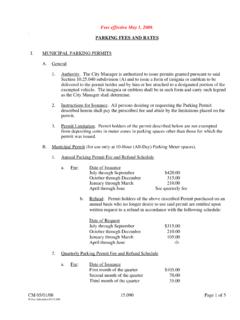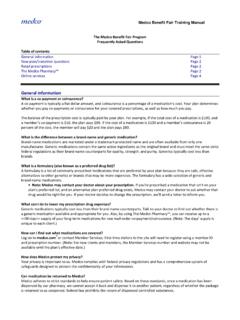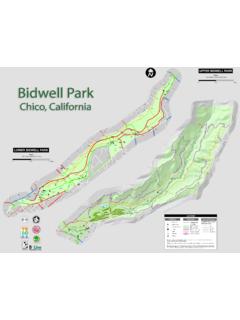Transcription of SIGNIFICANT CHANGES TO THE CALIFORNIA …
1 SIGNIFICANT CHANGES TO THE CALIFORNIA residential CODE 2016 EDITION BY Paul D. Armstrong, Stephen A. Van Note, Sandra Hyde, A book report prepared by the Sacramento Valley Association of Building Officials Code Development and Review Committee. NOTE: This report is not intended to replace the book SIGNIFICANT CHANGES to the CALIFORNIA residential Code 2016 Edition. SVABO members are encouraged to purchase the publication for insights, additional information, and comments regarding the significance of the CHANGES . Section Code change Significance Remarks PART 1 ADMINISTRATION AND DEFINITIONS Adds efficiency dwelling units to the list of buildings regulated by the CRC This change clarifies that the CRC may be used for the design of efficiency dwelling units. Previously it was not clear that these types of units were regulated by the CRC.
2 Adds efficiency dwelling units to list of building types that may be designed under the CRC See above. Adds the statement may be designed and constructed I accordance with this code or the CALIFORNIA Building Code, but not both. Clarifies that the Designer may utilize the CBC or the CRC but not both. Some designers believed that they could use a mix of the two codes. Identifies that moved structures must comply with the CALIFORNIA Existing Building Code (CEBC) not CBC Chapter 34. The Code was modified to reflect that CBC Chapter 34 has been replaced with the CEBC. , Adds a limitation that accessory structures be not more than three stories above the grade plane. R202 Removes the square footage limit allowable for accessory structures Adds to Alternate Means and Methods Where the alternative material, design or method of construction is not approved, the building official shall respond in writing, stating Previously the building official was not required to provide written reasons for denial.
3 This allows the applicant to review the reasons for denial and then either propose a substitute material or method of the reasons why the alternative was not approved. construction or correct errors in the original application. The criteria used to determine substantial improvement or substantial damage for existing buildings in flood hazard areas has been moved from the Building Board of Appeals provisions in Section to Section In effect this now makes the determination a one-step process as opposed to the current two-step process. Adds and in Coastal A Zones where such zones are delineated on flood hazard maps identified in Table (1) or otherwise delineated by the jurisdiction. To the required information for Construction in Flood Hazard Areas. Dwellings in areas designated as Coastal A Zones are now required to meet the requirements of Section for dwellings in coastal high-hazard zones (Zone V).
4 A new exception in allows backfilled stem wall foundations rather than open pilings if the foundation is dsigned to take into account the wave action, debris impact, and local scour in Coastal A Zones. Chapter 2 Defines that the Climate Zones are the 16 geographic areas established by the CALIFORNIA Energy Commission. Alingnes Climate Zones in the CRC with the Requirements of the Energy Code. Chapter 2 ADDS DEFINITION: Lodging House (HCD1) Any building or portion thereof containing not more than five guestrooms where rent is paid in money, goods, labor or otherwise, and that is occupied by the proprietor as the residence of such proprietor. HCD states that this modification is intended to provide clarity in the determination of transient lodging. Part 2: BUILDING PLANNING Table (1) Table (1) Climatic and Geographical Design Criteria now contains a section to include whether the jurisdiction contains special wind regions or wind borne debris zones.
5 The special wind regions and wind design required regions are shown on a single map for the continental United States. This can lead to errors interpreting the contour lines. The identification od zones wher wind-born debris requirements are applied should be provided by the local jurisdiction to ensure that those provisions are applied correctly. R202 Hurricane-Prone Regions are defined by ultimate design wind speed is 115 MPH rather tha basic wind speed of 90 MPH. The change brings the CRC wind provisions into alignment with the CBC. Related Sections: Wind Speed Maps have been added to the CRC Wind Speed Maps based on ASCE 7-10 Ultimate Wind Speeds Table (2) The Table Component and Cladding Loads for a Building with a Mean Roof Height of 30 Feet Located in Exposure B (ASD) (psf). Table has been modified to reflect Ultimate Wind Speed not basic wind speed.
6 Construction requirements for Sunrooms have been completely revised. Table Story Height: Story Height for wood framed walls is now limited to 11 -7 maximum with an allowable increase of 8 for bearing gable end walls. Story Height for masonry bearing walls is 11 Unprotected roof overhangs are now permitted to extend to within 2 of the property line when fireblocking is installed between the top of the wall and roof dwellings with or without fire sprinklers penetrations of exterior walls do not require protection unless they are located less than 3 from the property line. The provisions for separating townhouses with structurally independent fire-resistance-rated walls in accordance with have been removed in favor of the common wall provisions of Section Common walls between townhouses must now be rated 2-hours unless fire sprinklers are provided.
7 The provisions for fire protections for floors have been relocated from Chapter 5 to the fire-resistant construction provisions of Section R302, New language clarifies that the Code does not regulate penetrations or opening in the fire protection membrane. Interior and Exterior stairway illumination provisions have been placed in separate sections. Conflicting language has been removed to clarify requirement. Minimum Room area of 120 square feet has been removed. Habitable Rooms shall have a floor area of not les than 70 square feet has been added. Ceiling heights have been modified: Habitable spaces, hallways and portions of basements containing these rooms shall have a ceiling height of not less than 7 feet (No change ), Bathrooms, toilet rooms and laundry rooms shall have a ceiling height of not less than 6 -8 (Modification).
8 Glazing installed perpendicular to a door in a closed position and within 24-inches of the door only requires safety glazing if it is on the hinge side of the door. The revised language identifies the hazard of someone being pushed into the glazing by the door swinging open. The exception from safety glazing requirements for glazing that is 60-inches or greater from the water s edge of a bathtub, pool or spa has been expanded to include glazing that is an equivalent distance from the change clarifies that the code regulates the area inside, as well as outside afety glazing. edge of a shower, sauna or steam room. Glazing adjacent to the bottom stair landing is now defined as the area in front of the plane of the bottom tread. The Code has been modified to better define the area adjacent to the bottom stair landing in front of and to the side of the direction of travel.
9 New single- and two-family dwellings and townhouses now must be ready for EV charger installation. R310 The emergency escape and rescue opening provisions have been reorganized. Separate provisions spell out the requirements for windows and doors used for emergency escape and rescue. Clarifies provisions. No change The basement of a dwelling unit ADDITION does not require an emergency escape and rescue opening if there is access to a basement that does have an emergency escape and rescue opening. Remodeling of an existing basement does not trigger the emergency escape and rescue opening requirements unless a new bedroom is added. The required egress door of a dwelling unit must open directly into a public way or to a yard or to a court that opens to a public way. The total allowable vertical rise of a stairway without a landing is increased from 144-inches to 147-inches.
10 Open risers are now only permitted when they are 30-inches or less above the floor. The code now adds a definition of a spiral stairway and deletes the requirement that there be a center post. It also modifies the walkline requirements. Alternating tread devices and ships ladders have been added to the stair provisions. Neither is approved as a means of egress. Ramps that do not serve the required egress door are now permitted to have a slope not greater than 1 unit vertical in 8 units horizontal. Maximum slope or ramps serving non-egress doors is permitted to be 2 -6 in 20 -0 The provisions requiring the guard height to me measured from the surface of adjacent fixed seating have been removed. The window fall provisions have been revised to clarify the meaning, remove redundant language, and achieve consistency with the CBC provisions.



